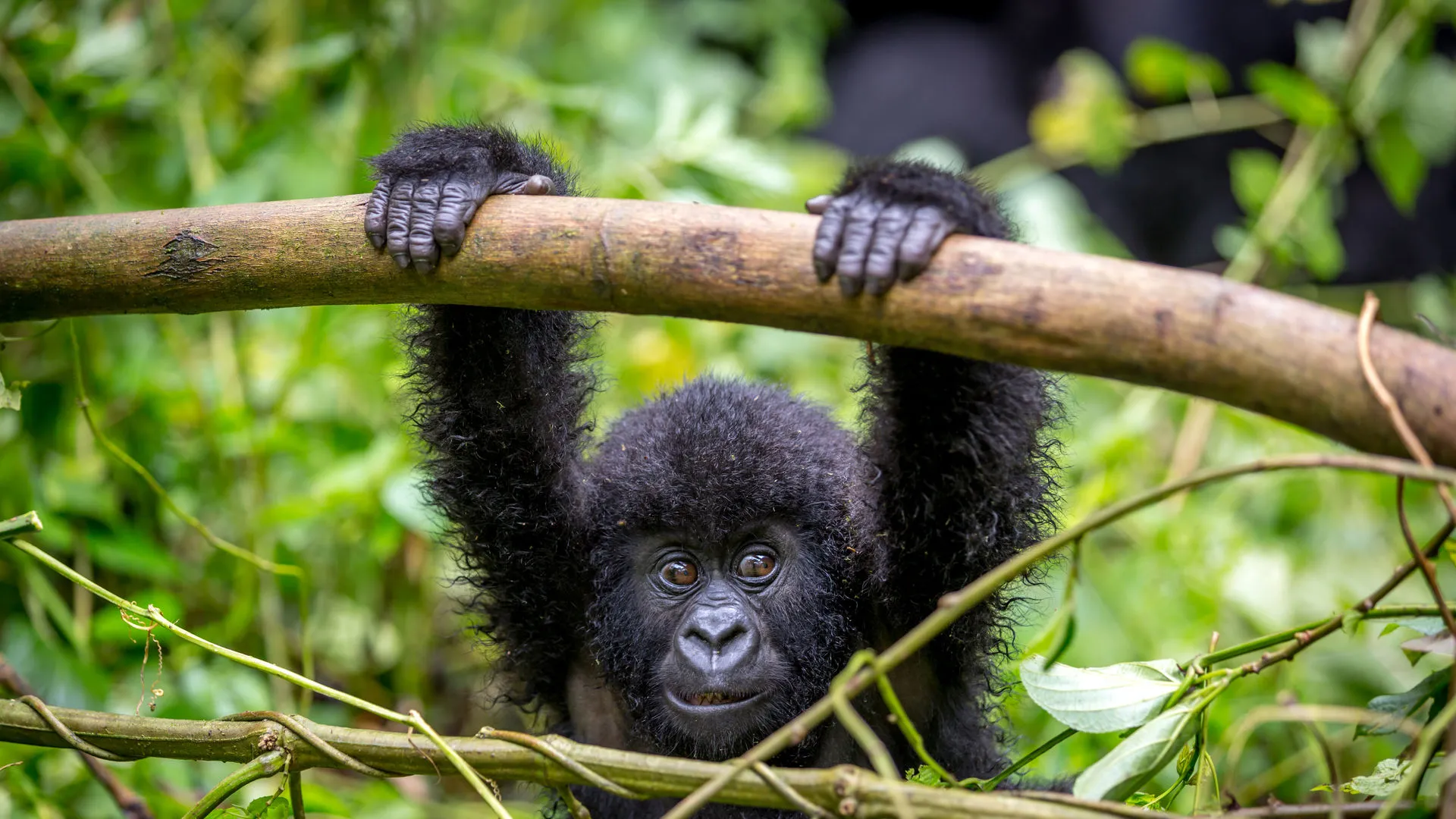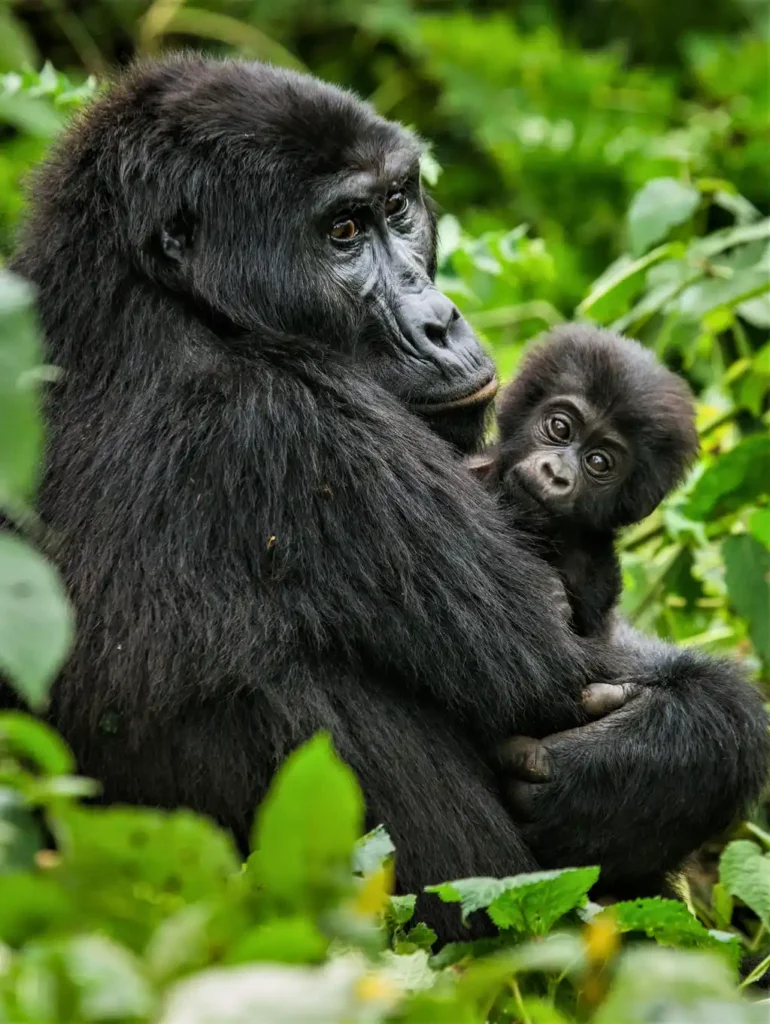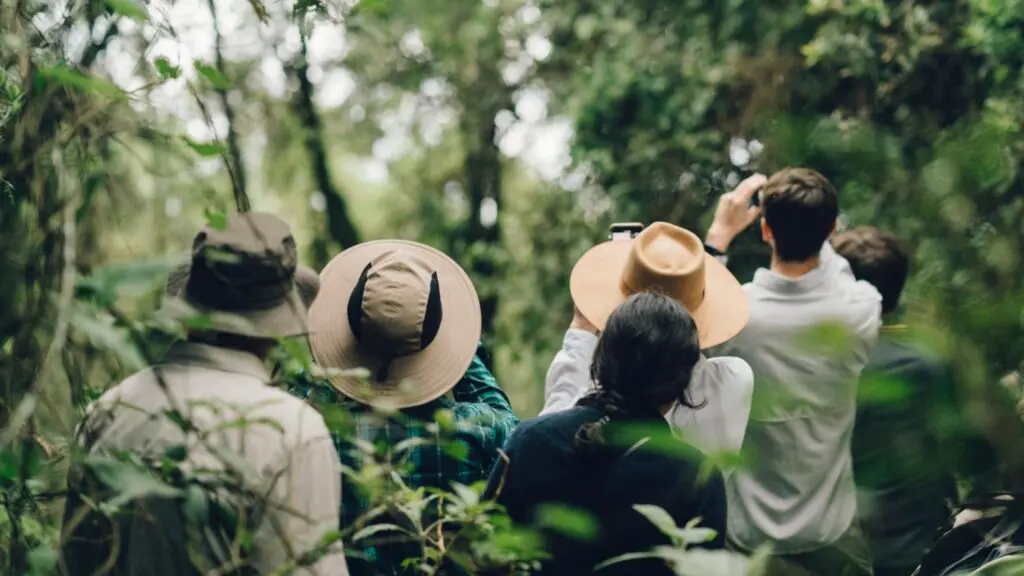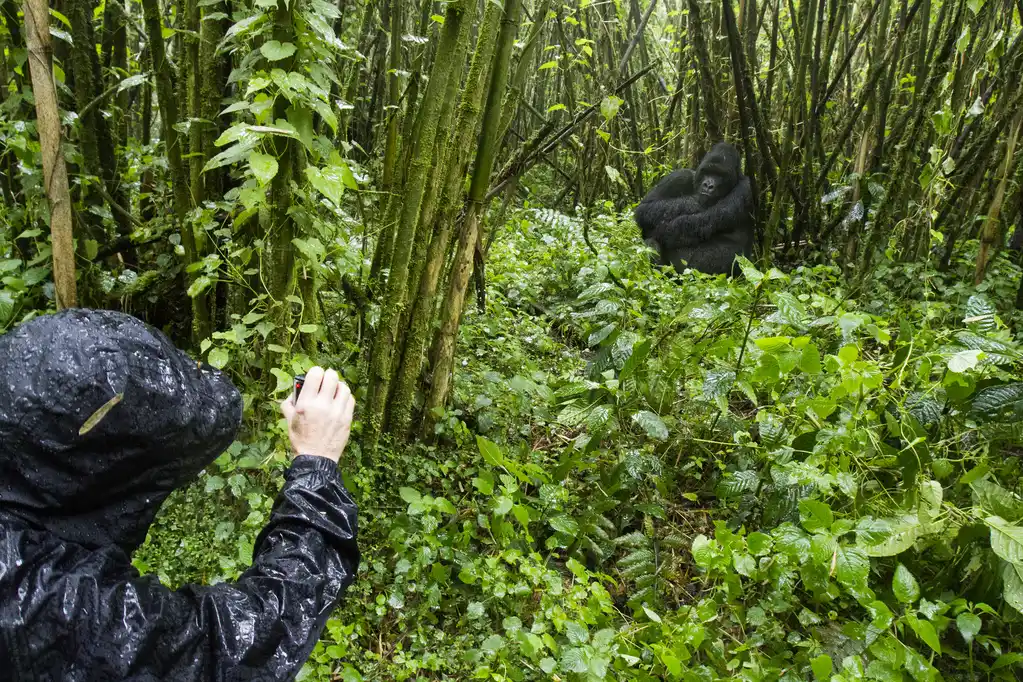
A Guide to Gorilla Photo Safaris In Uganda
Imagine standing just a few steps away from a wild mountain gorilla in the green forests of Uganda— it is an experience you will never forget.
Nature lovers and photographers really enjoy this special moment. You get to watch the gorillas live quietly in the wild and see how much they are like humans.
It’s also a great time to take amazing photos. If you want easy tips to enjoy your gorilla trekking trip, you’re in the right place!
The thick, mountainous forests of southwestern Uganda are among the best places in the world for gorilla trekking.
These remote parks and nature reserves are home to some of the last remaining mountain gorilla families on Earth.
The scenery here is truly breathtaking—steep hillsides covered in dense jungle, mist drifting through the treetops, and the sounds of birds and wildlife filling the air. It feels like stepping into another world.
The region’s beauty makes it not only perfect for wildlife viewing but also ideal for nature photography. The cool climate and rich vegetation create a dramatic, almost magical setting that makes every gorilla encounter feel even more special.
Here are the two parks for gorilla photography safaris in Uganda:
- Bwindi Impenetrable National Park: A large, misty forest with many gorillas and great spots for emotional wildlife photos.
- Mgahinga Gorilla National Park: A smaller park with amazing views of volcanoes and great photo chances with mountain backdrops.
While both parks are amazing, Bwindi Impenetrable Forest National Park is often the top pick for serious photographers due to its variety of habitats and larger gorilla population.



The Best Time of the Year To Go on a Gorilla Trekking Photo Safari
You can go gorilla trekking in Uganda at any time of the year, but some seasons are better for taking photos. The dry seasons — from June to August and December to February — are the best for a gorilla photo safari in Uganda.
The weather is more stable, the trails are easier to hike (especially with heavy camera gear), it’s easier to find the gorillas, and the skies are clearer for better lighting.
The rainy seasons — from March to May and September to November — can be harder, but still good for photography. The forest is green and full of life, with mist and raindrops adding beauty to your photos. Just make sure to protect your gear from rain and moisture. No matter when you go, mountain weather can change quickly, so it’s always good to be ready for anything.
What Camera Lens is Best For Gorilla Trekking Photo Safari?



Before we get into lens suggestions, it’s important to remember that you will be hiking through the dense rainforest for hours — so pack light. Bring only the gear that is truly useful and leave behind anything extra to avoid carrying too much weight.
Recommended lenses for gorilla photography:
- 70-200mm f/2.8 zoom lens – A great all-around lens for gorilla safaris. It works well for both close-up shots and slightly wider scenes, giving you flexibility.
- 24-70mm f/2.8 zoom lens – Perfect for those amazing moments when gorillas come very close. This lens captures the whole scene with a wide view and sharp details.
- 100-400mm zoom lens – Best for shooting faraway animals or birds. However, in thick forests, this lens can be too much and less practical for gorilla trekking.
Tripods are usually not allowed, but a monopod is a good choice if you need help keeping your camera steady.
What Camera Settings Are Best For Gorilla Trekking Photo Safari?
When you are deep in the forest jungle of Bwindi Impenetrable National Park, the light can be low and tricky. Here are some simple camera settings to help you get good photos of the gorillas:
- ISO: Start with ISO 800 to 1600. In darker areas, you may need to go even higher to get enough light.
- Aperture: Use a wide aperture (like f/2.8 or f/4). This lets in more light and makes the gorilla stand out by blurring the background.
- Shutter Speed: Try 1/250s or faster to freeze the gorillas if they are moving. You can go faster if needed.
- Shooting Mode: Use Aperture Priority mode (A or Av). You choose the aperture, and the camera picks the best shutter speed.
- Focus: Use Continuous Autofocus (AF-C) so your camera keeps focusing as the gorilla moves. Back-button focus can also help you focus more easily.
- Metering: Use spot metering or center-weighted metering to help the camera focus on lighting just around the gorilla.
- File Format: Shoot in RAW so you can edit your photos better later.
These settings are a good place to start, and you can adjust them as needed based on the light and movement.
Handy Gorilla Trekking Photography Tips
When taking photos during your gorilla trekking tour in Bwindi Impenetrable Forest and Mgahinga Gorilla National Park, here are some easy and helpful tips to make your pictures even better:
- Get low: Try to crouch down so you’re at the same level as the gorillas. This makes them look bigger in the photo and helps them stand out from the background.
- Focus on the eyes: Gorilla eyes can show a lot of emotion. Use single-point autofocus to make sure the eyes are sharp and clear.
- Capture interactions: Gorillas are special because they act a lot like us. Look for touching moments—like a mother with her baby, young gorillas playing, or quiet grooming time. These show real emotion and connection.
- Use the forest: The leaves and trees can sometimes get in the way, but you can also use them to frame your shot in a creative way. Also, if light is shining through the trees, try to use that glow to add something magical to your photo.
- Stay safe and follow the guide: Always listen to your guide and keep a safe distance from the gorillas. This protects both you and the animals.
Who Are Gorilla Trekking Photography Safaris For?
Gorilla trekking photography safaris in Uganda are great for anyone with a basic level of fitness.
The treks can be challenging and may take between 2 to 6 hours of hiking through forests and hills. It’s a good idea to get ready by doing some walks or short hikes before your trip.
Because trekking can sometimes be tough, children under 15 years old are not allowed to join. To protect the gorillas and give visitors a better experience, only 8 people are allowed in each trekking group. This helps keep things quiet and respectful, and it means you won’t have to fight for space to see or take photos.
How experienced should you be to go on a Gorilla Trekking Photo safari?
You don’t need to be a professional photographer to go for a mountain gorilla trekking photo safari. These trips are perfect for photographers of all skill levels, including beginners.
In fact, if you are new to photography, it can be a great chance to learn from others on the trek. If you are just starting out, try to practice with your camera before the trip.
Get to know the basic settings so you’re ready when a special moment happens. You don’t want to be stuck adjusting your camera while the gorillas are right in front of you!
Final thoughts
A gorilla trekking photography safari in Uganda is a truly unforgettable experience — one that touches the heart and leaves you with powerful memories of being close to these amazing animals.
If you are dreaming of your own mountain gorilla trekking adventure, get in touch with our safari experts today. We will help you plan a trip that’s perfectly tailored to your interests and needs, making your journey as special as the moments you’ll capture.






